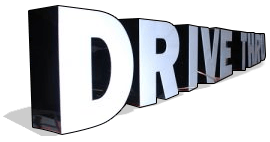Useful Websites
ARTWORK FORMATTING & USEFUL WEBSITES Useful Websites & what they help with. What types of files (formatting) artwork needs to be supplied in. How to tell if your image can be used with your signage. Useful Websites & what they help with. Shutterstock Shutterstock helps creative professionals from all backgrounds and businesses of all sizes produce their best work with incredible content and innovative tools, all on one platform. Click Here Istock Every file downloaded on iStock comes with a standard license that lets you use it in a wide variety of projects including advertising, websites, blogs, presentations, publications, video productions, podcasts, and more. Click Here Canva An awesome program that guides you through a design process, regardless of your business’s size or needs. It’s a user-friendly platform that can help elevate your marketing efforts, making it a valuable tool for any business. Check out the follow link for a basic tutorial how to save your file out in a PDF. Click Here Adobe Creative Suite Adobe Creative Suite The software assists in creating and editing digital content for both online and print distribution, facilitating collaboration and creativity. Click Here Adobe Stock Images An awesome program that guides you through a design process, regardless of your business’s size or needs. It’s a user-friendly platform that can help elevate your marketing efforts, making it a valuable tool for any business. Click Here Freepik Freepik is an online platform offering a vast collection of high-quality graphic resources, including vector images, illustrations, photos, and icons. Click Here What types of files (formatting) artwork needs to be supplied in: When artwork is supplied to you by a graphic designer, you will be given files that unless you have the program that it was created on will not open on your computer. Files such as PNG, JPEGs and PDFs are the usual files that can be opened without needing any programs. Files such as Vector, Ai and EPS mainly require a program to access the contents. For more information about programs and files check out the site below. Click here Type PDF Types Ai Types EPS Types Vector How to tell if your image can be used with your signage: OPTION 1: Vector (Preferred) Vectors use a different approach to image rendering. They’re made of paths and curves dictated by mathematical formulas. These paths and curves are produced exclusively through software designed for vectors, like Adobe Illustrator or Sketch. Due to their algorithmic makeup, vectors are infinitely scalable, and remain smooth and crisp even when sized up to massive dimensions. Even when scaled to substantial proportions, the image below remains clean and exact. Raster Raster, or bitmap, images consist of tiny squares—pixels—that contain bits of color. When pixels are combined, they build images. The more pixels in an image, the higher the image quality. When you zoom in on an image, the pixels become more apparent while the details of the image become blurry. When you are fully zoomed in, you’ll see the grid of pixels For more information reference this Shutterstock Site below. Click here OPTION 2: It is preferred that images supplied are at 150DPI. DPI stands for Dots per Inch, referring to the number of ink droplets a printer will produce per inch while printing an image. The more dots of ink per inch the picture has, the more detail you will see when printed. How can I find the DPI of an image? Open File Explorer Select the folder in which the image is located in. Right click on the image. Select Properties Select the details tab at the top of the bar Scroll down he find the image dimensions and the DPI resolutions

